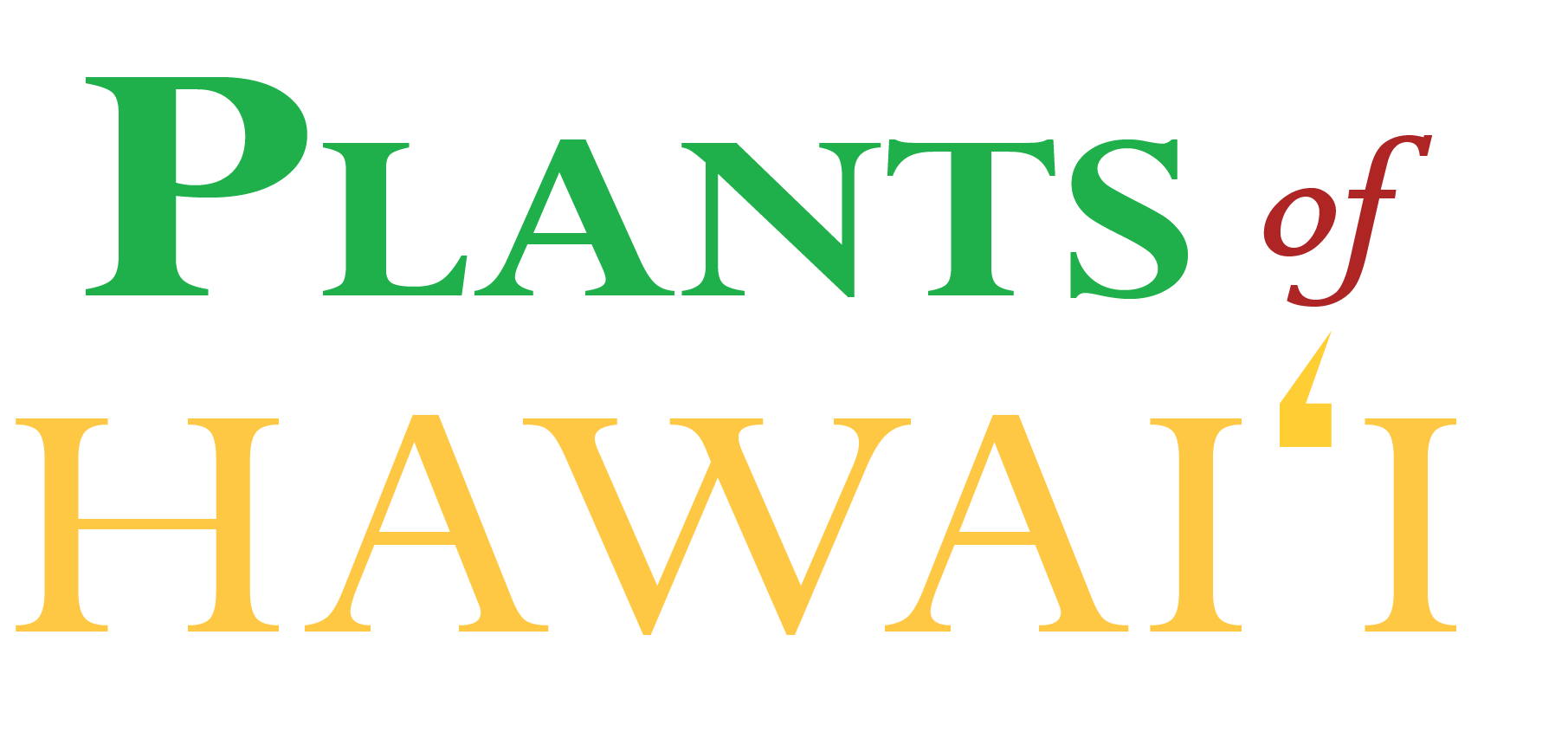Key Characters:
Growth Form: Shrubs or small trees 3–6(–15) m tall.
Stems:
Roots:
Leaves: Leaves simple. Opposite. Blades narrowly to broadly elliptic, elliptic–ovate, or lanceolate to ovate, 2.8–9 cm long, 0.9–4.1 cm wide. Apex obtuse to rounded, sometimes emarginate. Base cuneate. Surfaces glabrous, glossy on upper surface; lower surfaces less so or dull, somewhat thickened and coriaceous. Margins entire. Petioles 0–1 cm long. Stipules 2–5 mm long, interpetiolar, deltoid to ovate or lanceolate, lacking adaxial indument, apex abruptly acuminate to caudate, valvate in bud, usually bearing mucilate-producing colleters on inner surface that aid in protection of the growing shoot tip.
Flowers: Flowers 4- or 5-merous, numerous in corymbose cymes, cymes 2.5–3.5 cm long, pedicels 1–3 mm long, the bracts and bracteoles usually inconspicuous; hypanthium broadly ellipsoid to nearly hemispherical. Flowers bisexual (perfect) or functionally pistillate, protandrous, often heterostylous; fragrant, insect-pollinated. Calyx ca. 2 mm long, minutely dentate, limb truncate to dentate, 4-5-lobed with open aestivation, usually shorter than hypanthium, lobes usually small, rudimentary or absent. Corolla white, 4–6-lobed, 4–7 mm long, the lobes 3–4.5 mm long, reflexed, subequal to tube in length or longer or shorter, often thickened toward apex, valvate, imbricate, or convolute, usually obtuse to acute, tube broadly cylindric, often with deflexed hairs within and pubescent at throat; nectary disk cushion–shaped with a dense fringe of retrorse hairs. Stamens as many as and alternate with the corolla lobes, attached in corolla throat, exserted; filaments ca. 1.5–2.5 mm long, well developed; anthers ca. 1.5–2.5 mm long, dorsifixed near base, lanceolate to narrowly ovate, usually reflexed, dithecal, opening by longitudinal slits. Ovary inferior, 2-locular; ovules solitary in each locule, attached to the upper 1/3 of septum; style 5.5-7.5 mm long, slender, longer than corolla tube, glabrous, sometimes narrowing at apex, 1 or as many as carpels, terminal, the stigmatic knob cylindric, longer than broad, hollow to about the middle, bifid or deeply cleft at apex when mature; stigmas 2-lobed, dry or occasionally wet.
Fruit: Drupes 2-seeded black; juicy; obovoid; somewhat compressed; grooved on each side; emarginate; 8–10 mm long; the pyrenes cartilaginous to woody; rugulose to deeply furrowed; with a shallow apical cleft. Seeds incurved; with entire endosperm.
Ploidy:
Habitat: Dry shrubland and dry to mesic forest; often on slopes; also apparently in wet forest on O'ahu.
Elevation Range:
10–860(–1160) m.
Black (leaves)
Durable wood used as cutting tool on softer woods and for farming tools, shark hooks, bait sticks (charred over fire); leaves for dye (Krauss 1993:25, Little & Skolmen 1989:296; Rock 1913:437; Wagner et al. 1990:1118); one of the hardest woods (Abbott 1992:12) that was fashioned into adzes (Kamakau 1976:122); sticks to keep pot lids open (Malo 1951:22). In the Ethnology Collection at Bishop Museum there is a post-contact example of the wood made into a bowl.
O'o - agricultural tool
Indigenous
IUCN:Least Concern
Laukahi: The Hawai'i Plant Conservation Network:Species of Conservation Importance
Name Published In: Fl. Vit. Nova 4: 230 (1988)
Other References
Wagner et al. 1990:1119 (K, O, Mo, L, M, H [as Canthium odoratum]); Smith 1988:230/Herbst & Wagner 1999:31 (COMBNOV, Syn. C. odoratum = P. odorata); Staples & Herbst 2005:484 (KEY), 499 (DESCR)
Laau Hawaii (Abbott) p.12
| SNo. | Scientific Name | Scientific Name Authorship | Locality | Habitat | Basis of Record | Recorded By | Record Number | Island | Source | Date |
|---|

Lorem ipsum dolor sit amet, consectetur adipiscing elit, sed do eiusmod tempor incididunt ut labore et dolore magna aliqua. Ut enim ad minim veniam, quis nostrud exercitation ullamco laboris nisi ut aliquip ex ea commodo consequat. Duis aute irure dolor in reprehenderit in voluptate velit esse cillum dolore eu fugiat nulla pariatur. Excepteur sint occaecat cupidatat non proident, sunt in culpa qui officia deserunt mollit anim id est laborum.

Lorem ipsum dolor sit amet, consectetur adipiscing elit, sed do eiusmod tempor incididunt ut labore et dolore magna aliqua. Ut enim ad minim veniam, quis nostrud exercitation ullamco laboris nisi ut aliquip ex ea commodo consequat. Duis aute irure dolor in reprehenderit in voluptate velit esse cillum dolore eu fugiat nulla pariatur. Excepteur sint occaecat cupidatat non proident, sunt in culpa qui officia deserunt mollit anim id est laborum.

Lorem ipsum dolor sit amet, consectetur adipiscing elit, sed do eiusmod tempor incididunt ut labore et dolore magna aliqua. Ut enim ad minim veniam, quis nostrud exercitation ullamco laboris nisi ut aliquip ex ea commodo consequat. Duis aute irure dolor in reprehenderit in voluptate velit esse cillum dolore eu fugiat nulla pariatur. Excepteur sint occaecat cupidatat non proident, sunt in culpa qui officia deserunt mollit anim id est laborum.

Lorem ipsum dolor sit amet, consectetur adipiscing elit, sed do eiusmod tempor incididunt ut labore et dolore magna aliqua. Ut enim ad minim veniam, quis nostrud exercitation ullamco laboris nisi ut aliquip ex ea commodo consequat. Duis aute irure dolor in reprehenderit in voluptate velit esse cillum dolore eu fugiat nulla pariatur. Excepteur sint occaecat cupidatat non proident, sunt in culpa qui officia deserunt mollit anim id est laborum.

Lorem ipsum dolor sit amet, consectetur adipiscing elit, sed do eiusmod tempor incididunt ut labore et dolore magna aliqua. Ut enim ad minim veniam, quis nostrud exercitation ullamco laboris nisi ut aliquip ex ea commodo consequat. Duis aute irure dolor in reprehenderit in voluptate velit esse cillum dolore eu fugiat nulla pariatur. Excepteur sint occaecat cupidatat non proident, sunt in culpa qui officia deserunt mollit anim id est laborum.

Lorem ipsum dolor sit amet, consectetur adipiscing elit, sed do eiusmod tempor incididunt ut labore et dolore magna aliqua. Ut enim ad minim veniam, quis nostrud exercitation ullamco laboris nisi ut aliquip ex ea commodo consequat. Duis aute irure dolor in reprehenderit in voluptate velit esse cillum dolore eu fugiat nulla pariatur. Excepteur sint occaecat cupidatat non proident, sunt in culpa qui officia deserunt mollit anim id est laborum.
Thank you for your interest in submitting an image of
Select your image and leave a brief description of your photo below.


